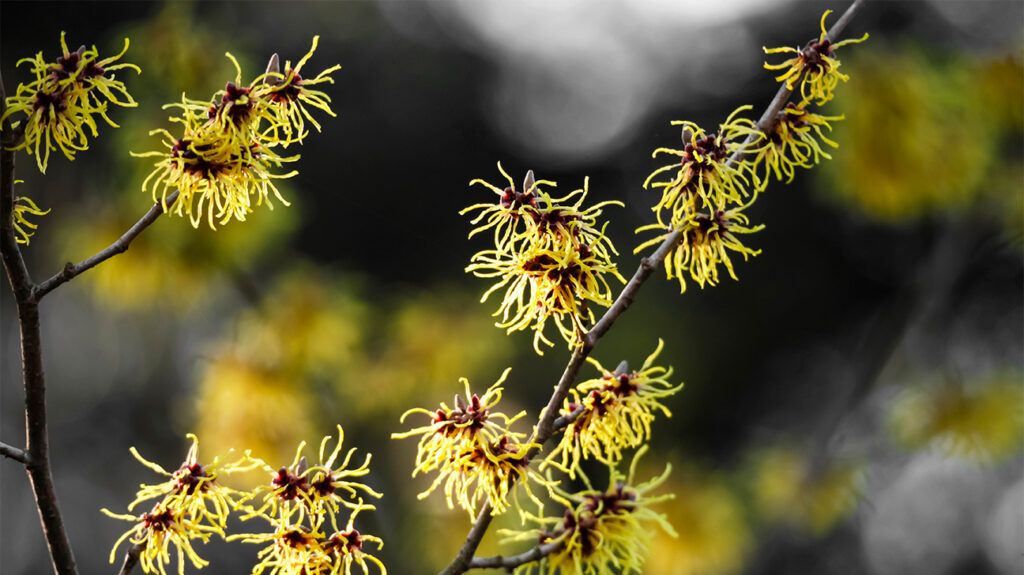Witch hazel may have various skin benefits due to its anti-inflammatory and astringent properties. It may help treat skin conditions due to inflammation, but more research is necessary.
Witch hazel (Hamamelis virginiana) is a shrub native to the east coast of North America. Many people use it as a decorative outdoor plant.
Witch hazel is available as a distilled, clear liquid in most drugstores. It is also an ingredient in various cosmetics and medications.
In this article, learn about the possible benefits of witch hazel and how to use it safely.

Witch hazel is an astringent — a substance that causes tissues to tighten or shrink. People commonly use it topically, meaning they apply it directly to the skin.
Witch hazel may help treat the following conditions.
Hemorrhoids
Witch hazel may help heal hemorrhoids, which are dilated veins in the anus or rectum. Hemorrhoids can cause irritation, bleeding, and discomfort.
While there is
Acne
Many topical acne treatments contain witch hazel. Its astringent properties make it a suitable option for people with oily skin. Witch hazel is also noncomedogenic, meaning it does not clog pores.
In a
To use witch hazel to treat acne, a person can:
- cleanse the skin using a mild, soap-free cleanser
- add a few drops of witch hazel water to a cotton ball or pad and wipe over the skin gently
- use a mild moisturizer
Read about six types of acne.
Rashes
Witch hazel may help soothe skin rashes by reducing inflammation. However, it is best to avoid putting it on any area where the skin is broken or oozing.
Some pediatricians recommend witch hazel for diaper rashes. In a 2023 study in Turkey,
To use witch hazel on a rash, a person can dilute it with equal parts water before applying it to the skin with a cotton ball or pad.
Learn more about getting rid of diaper rash.
Varicose veins
Varicose veins are dilated veins in the legs that can cause significant discomfort and alter the legs’ appearance.
In a small 2020 study, a researcher found that taking witch hazel orally twice daily for 2 months appeared to reduce some symptoms of varicose veins. However, Doppler ultrasound measurements showed no improvements in blood flow in the veins.
The researcher suggested this may be due to the short duration of the study, although more reliable research is necessary.
Anecdotally, some people think that soaking a cloth in witch hazel and applying it to varicose veins can help reduce swelling and improve the appearance of varicose veins. However, there is no evidence to support witch hazel for this purpose.
Sunburn, bug bites, and stings
Sunburn, bug bites, and stings can cause swelling and inflammation. Applying witch hazel to the affected area of the skin may reduce itching and discomfort. There is little research on witch hazel for this purpose, and existing studies are old.
People can use a cloth or cotton ball to apply witch hazel directly to sunburn, a bite, or a sting. It may be soothing for tender areas of skin to mix witch hazel with aloe vera, which is another plant and anti-inflammatory agent.
Witch hazel is likely safe for most people to use as an at-home treatment for some common skin issues. It is unclear whether it is safe to use during pregnancy and breastfeeding.
Some people may have an allergic reaction to witch hazel, so it is best to test it on a small patch of skin first and monitor the effects. The American Academy of Dermatology recommends applying a new skin care product to a test spot twice daily for 10 days. If there is no itching or irritation, it should be safe to apply to a larger area.
People have used witch hazel as a skin treatment for many years, but there is little reliable evidence of its effects.
Witch hazel has anti-inflammatory and astringent properties that may help treat conditions such as acne and diaper rash.
Before trying witch hazel as a skin treatment, people may wish to do a patch test for 10 days to ensure the product does not cause skin irritation. Diluting witch hazel may also help prevent skin irritation. However, people need to avoid using witch hazel on broken skin.


